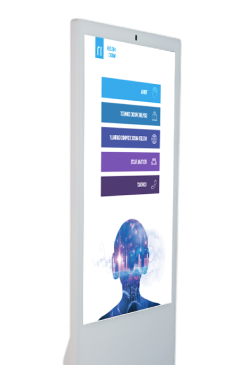

Event Solutions

Our Work

Best Practices for Integrating Digital Signage at Trade Shows
Integrating digital signage into your trade show setup doesn't have to be daunting. Follow these best practices to ensure a smooth and successful implementation.
Best Practices for Integrating Digital Signage at Trade Shows
Digital signage can be a game-changer at trade shows, offering dynamic and engaging ways to communicate with attendees. However, integrating these technologies seamlessly requires careful planning and execution. Here are some best practices to ensure your digital signage enhances your trade show presence without a hitch.
Plan Your Content Strategy
Why It Matters: The effectiveness of your digital signage depends largely on the content you display. Having a clear strategy ensures that your message is consistent and impactful.
Best Practice: Define your goals and tailor your content accordingly. Whether you want to inform, entertain, or engage, your content should be designed to achieve these objectives. Use a mix of videos, animations, and static images to keep things interesting.
Choose the Right Technology
Why It Matters: The type of digital signage you use can greatly affect the overall experience. Different technologies have different strengths, so it's important to choose the right one for your needs.
Best Practice: Evaluate your options based on factors like display size, resolution, interactivity, and portability. For example, touchscreen kiosks are great for interactive sessions, while LED video walls are perfect for high-impact visual displays.
Optimize for Visibility
Why It Matters: If your signage isn't easily visible, it won't be effective. Placement and design play crucial roles in ensuring your content gets noticed.
Best Practice: Position your signage at eye level and in high-traffic areas. Use bright colors and bold fonts to make your messages stand out. Also, consider the lighting conditions of the venue to avoid glare and ensure clarity.
Test Everything Before the Event
Why It Matters: Technical issues can ruin your presentation and leave a bad impression on attendees. Testing ensures everything runs smoothly when it matters most.
Best Practice: Conduct a thorough test of all your digital signage equipment well before the event. Check for any issues with connectivity, software, or hardware. Have a backup plan in place for any potential technical glitches.
Engage Your Audience
Why It Matters: Interactive signage can significantly boost engagement, making your booth more attractive to attendees.
Best Practice: Incorporate interactive elements like touchscreens, QR codes, or social media integrations. Encourage attendees to interact with your signage through games, polls, or social media challenges.
Monitor and Adjust in Real Time
Why It Matters: The ability to update and adjust your content in real time ensures that your messaging remains relevant throughout the event.
Best Practice: Use a dynamic content management system (CMS) that allows you to make updates on the fly. Monitor engagement metrics and adjust your content strategy as needed to keep things fresh and engaging.
Measure Your Success
Why It Matters: Knowing how well your digital signage performed can help you make informed decisions for future events.
Best Practice: Track key metrics such as engagement rates, interaction times, and attendee feedback. Use these insights to evaluate the effectiveness of your digital signage and identify areas for improvement.
Conclusion
Integrating digital signage into your trade show setup can elevate your presence and create memorable experiences for attendees. By following these best practices, you can ensure a seamless and impactful implementation that helps you achieve your event goals. Plan ahead, choose the right technology, and stay flexible to make the most out of your digital signage.